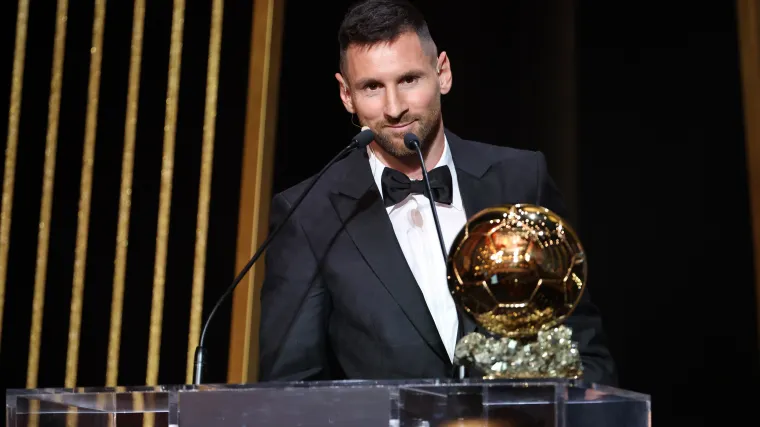The Ballon d’Or, given out on an annual basis by France Football, is considered the most prestigious individual award in global football.
Every year, the huge, glittering trophy is handed out to the individual considered the best player over the previous season.
Steeped in history and glory, the prize is also sometimes thought of as a bit of a mystery. Even as the voting process is quite straightforward and fully transparent, it has not quite made its way into the mainstream alongside the award itself, especially thanks to some recent tweaks to the structure and guidance.
The Sporting News explains what voters are meant to consider when selecting their nominees, and how the voting process is structured.
MORE: When is the Ballon d’Or award ceremony? | How does the Ballon d’Or selection work?
How is the Ballon d’Or decided? Explaining criteria
There are three main criteria that France Football has instructed voters to consider when crafting their list of potential winners.
- Individual performance, decisive impact, and impressive character
- Team achievements and collective success
- Sportsmanship and the player’s class, on and off the pitch
This means that not only does an individual’s raw output matter, but also how well they contribute to their team’s collective success, and the manner in which they conduct themselves.
What is NOT meant to be considered is past achievements or global status. Thus, players who have won the award before are not supposed to be given a higher platform simply because of career success beyond the indicated time period.
The Ballon d’Or, in theory, is meant simply to recognise the best player from the given time period and nothing more. That given time period has changed in recent years, however. Originally meant to produce the best player from the last calendar year, France Football recently changed the consideration timeframe to fit the European season. Thus, consideration is taken from the start of August through the end of the competitive summer tournaments.
For the 2024/25 season, that means the consideration period begins at the start of league campaigns in August 2024 and runs through the end of the 2025 FIFA Club World Cup.
MORE: Who should win the 2025 Ballon d’Or? Power ranking the top candidates
Who is eligible to win the Ballon d’Or?
Beginning with the award’s inception in 1956, only players from European nations contracted to European clubs were eligible to win the Ballon d’Or.
However, that restrictive nature has evolved over the years to the more inclusive award seen today.
In 1995, the Ballon d’Or opened the nominee pool up to players of any nation playing for a European club. Then in 2007, all players in professional football around the world became eligible to win the award.
In practice, however, the prize still remains locked into European-based players. Those clubs are not only the most visible but also the most prestigious, and thus performance at the highest level in Europe places players on a pedestal above all others.
MORE: All-time list of Ballon d’Or winners: Who has won the most? | Which club has the most Ballon d’Or winners?
Who votes for the Ballon d’Or?
Journalists from France Football work alongside those from fellow French publication L’Equipe to produce the 30-player shortlist for the Ballon d’Or. This selection process can sometimes include other individuals such as former players or award winners.
Then, once the 30 nominees have been identified and released, it’s time to vote on the winner. As it has been for decades, the Ballon d’Or is selected by a wide-ranging jury of global journalists, which changes from year to year.
Previously, one journalist from each of FIFA’s 180 member nations would vote on the award each year. However, in recent years, that has been restricted to just one journalist from the top 100 FIFA-ranked nations.
Each journalist whittles down the 30 nominees to a top 10 list, ordered in terms of most deserving to least deserving. Points are awarded for each vote in a tiered system, with 15 points given to the player listed in first, 12 to second, 10 to third, then 8, 7, 5, 4, 3, 2, and 1 respectively.
The points are then tallied up from all 100 submissions and a winner is selected as the player with the most points. If two or more players are tied at a particular position, the tiebreaker is the number of first-place votes received. If they are still level, it moves to the most second-place votes, and so on.
The votes are all made publicly available shortly after the award is presented, allowing full transparency.






